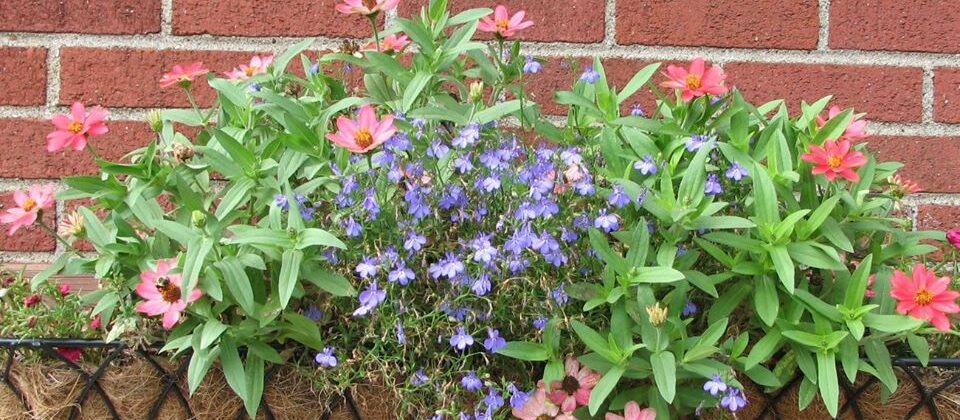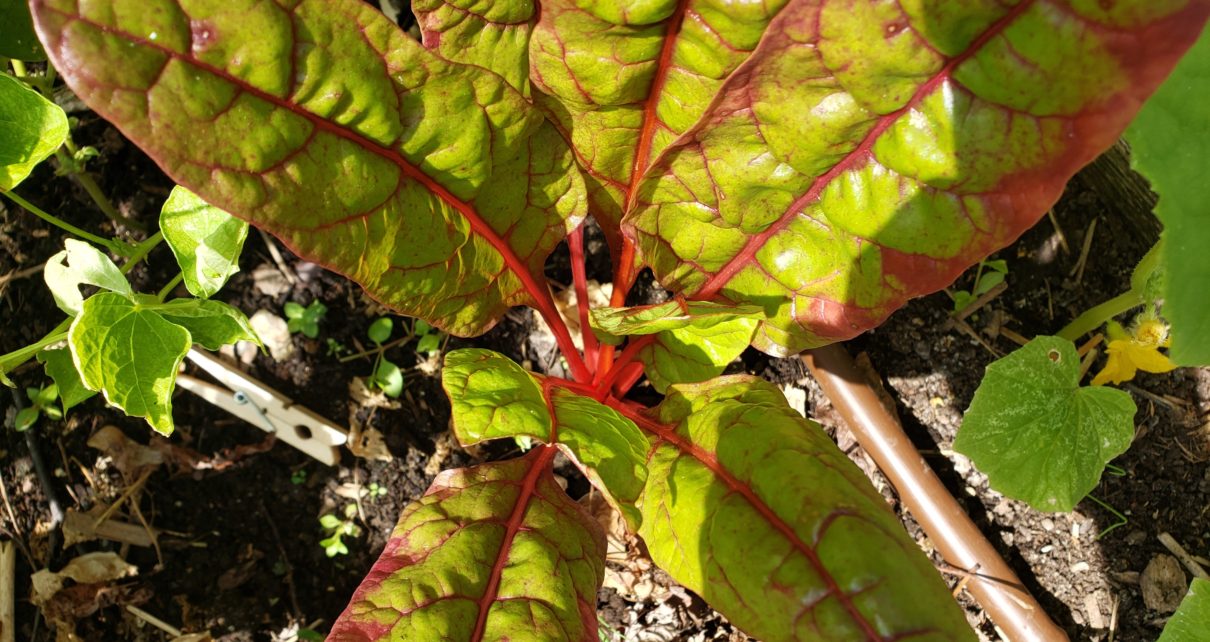While I like the green leaves, I love the colorful and crunchy stems! I chop the stems for my salads for an extra crunch on my salads.
Swiss chard enjoys growing in the soil or in a hydroponic system.
In order to germinate Swiss chard prefers soil temperatures between 50°F and 75°F. This means that you can start sowing early to mid spring and late summer.
Indoor Sowing Tips:
Sow the seeds 1/2″ deep in seed trays under grow lights.
While I initially water the seeds from above until the seeds germinate, I switch to water from below in the seed tray.
Transplant the Swiss chard seedlings to 4 inch pots in the grow room once there are a few sets of true leaves and continue to water them from below in the seed tray.
Don’t forget to harden off the seedlings before transplanting.
It is suggested to space Swiss chard seedlings 6″ apart (4 plants per square foot) or 12″ apart (1 plant per square foot).
Outdoor Sowing Tips:
Swiss chard seeds should be planted 1/2″ deep and the plants should be thinned to 6″ apart (4 plants per square foot or 12″ apart (1 plant per square foot). If you want baby Swiss chard, then plant the seeds closer together.
I water the seeds from above until the seeds germinate, then switch to the drip system.
Growing Tips:
You can extend the planting and transplanting schedules and be prepared for crazy temperature swings by using hoop tunnels and garden fabric.
Provide compost when planting and use plant food that is higher in nitrogen as needed.
Keep Swiss chard seedlings and plants moist but not soggy by using a drip system.
Swiss chard may be attacked by slugs so I use Sluggo Plus to get rid of them.
Since Swiss chard loves cooler weather and the roots are shallow, you may want to use a shade cloth over hoops in the afternoon and use some leaf mold as mulch.
Swiss chard is great for succession planting and interplanting.
Swiss chard is a member of the Amaranth Plant Family and belongs to the Greens veggie category.


